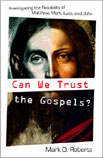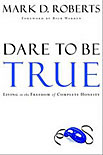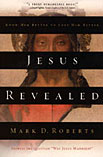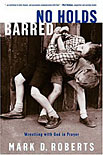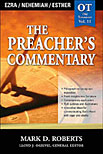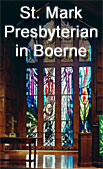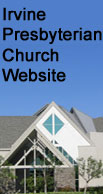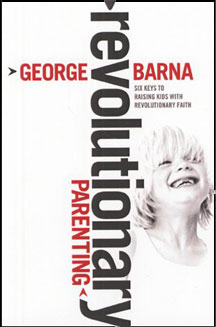My blog has moved! http://www.patheos.com/blogs/markdroberts/
|
 |
Twitter Feed for My Recent Blog Posts and Other Tweets |
My blog has moved! http://www.patheos.com/blogs/markdroberts/
|
Advent Calendar for December 11
By Mark D. Roberts | Tuesday, December 11, 2007

Click here for the December 11 Advent Calendar entry!
Topics: Advent Calendar | No Comments »
My Response to N.T. Wright at Laity Lodge (cont)
By Mark D. Roberts | Tuesday, December 11, 2007
Part 11 of series: Sharing Laity Lodge
Permalink for this post / Permalink for this series
At the pastors and leaders retreat at Laity Lodge, Bishop N.T. Wright gave five talks. We had asked him to speak from the platform of his fine book Simply Christian, and to spell out implications for Christian leadership. In fact, Bishop Tom did as we had asked, though adding an extra twist. He showed how many of the themes of Simply Christian are lived out in the early church as portrayed in Acts of the Apostles. So we got more than we bargained for, most happily, I might add.
I’m not going to summarize Bishop Tom’s teaching. And, unfortunately, Laity Lodge is not yet wired to put things like this online, either for purchase or for podcast. (If you want to purchase the CDs of this retreat, please contact our Administrative Coordinator, Liz Short, for the details.) What I want to do is to share one of my personal responses to Bishop Tom’s teaching.
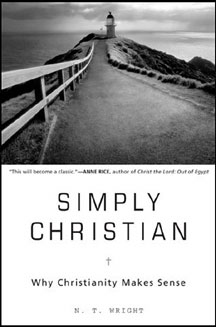 As he connected the points of Simply Christian to the book of Acts, I was struck again and again by Bishop Tom’s effort to interpret the text of Scripture accurately. Every time he referred to a passage from Acts, he set that passage in its larger literary and cultural context, and then paid close attention to the actual words and logic of the passage. Now there’s nothing radically innovative here. These are exactly the skills I have taught in seminary exegesis courses. But, listening to Bishop Tom, I was reminded of how tempting it is to cut exegetical corners. If I’ve worked on a text before, or if I think I know what it says, or if I just get tired, I’m inclined not to do the hard work of textual interpretation. Bishop Tom, on the other hand, keeps working away on the text. His example encouraged me and, to be honest, chastened me a bit.
As he connected the points of Simply Christian to the book of Acts, I was struck again and again by Bishop Tom’s effort to interpret the text of Scripture accurately. Every time he referred to a passage from Acts, he set that passage in its larger literary and cultural context, and then paid close attention to the actual words and logic of the passage. Now there’s nothing radically innovative here. These are exactly the skills I have taught in seminary exegesis courses. But, listening to Bishop Tom, I was reminded of how tempting it is to cut exegetical corners. If I’ve worked on a text before, or if I think I know what it says, or if I just get tired, I’m inclined not to do the hard work of textual interpretation. Bishop Tom, on the other hand, keeps working away on the text. His example encouraged me and, to be honest, chastened me a bit.
I was also impressed by his willingness to admit when he wasn’t quite sure what a biblical passage meant. In the Question & Answer session, somebody asked about the meaning of Matthew 25:31-46. That’s the passage where the Son of Man/King judges the “sheep” and the “goats.” It’s the text where Jesus says, “I was hungry and you gave me food, I was thirsty and you gave me something to drink” etc. In response to the question about this passage, Bishop Tom admitted that he still wasn’t sure exactly how to interpret it, that he had various theories, but that he hadn’t settled on one. Apart from demonstrating impressive humility in this admission, it struck me as coming from someone who just won’t “cheat” when it comes to biblical interpretation. He will work on the text for as long as it takes to discern its meaning.
Now that’s not to suggest that Bishop Tom is inerrant in his exegesis. I’m sure he gets some things wrong, perhaps even some major things. Which of us doesn’t? But his relentless pursuit of biblical meaning is laudable as well as a great encouragement to the rest of us. He reminds me that faithfulness in understanding the Scripture requires hard work. I hope and pray I can imitate Bishop Tom’s example in my own life and ministry.
If you’re a lay person, if you’ve never studied Greek or Hebrew, if you don’t have lots of hours for study, you may wonder if you can engage in the sort biblical interpretation modeled by Bishop Tom. Though academic training and the knowledge of ancient languages certainly helps, I think it’s quite possible for somebody without such advantages to wrestle honestly and successfully with the meaning of Scripture. With a couple of good translations and a couple of decent commentaries, you can come close to the meaning of the original text. Moreover, much of what leads to the successful interpretation of a text has to do with careful reading of the passage and the context again and again and again. This can be done in English translation. So, though I would encourage anyone who is serious about Bible study to get some relevant academic training, I would also say that the discipline and commitment modeled by Bishop Tom are things that any Christian can and should emulate.
His commitment to figuring out what Scripture really says, rather than what we think it says or what we’d like it to say, gets Bishop Tom into trouble at times. He continues to take lots of flak from liberal Christians who are distressed by his interpretation of biblical texts related to homosexuality. Moreover, at the moment, he’s on the hot seat with many Reformed and evangelical thinkers – my theological family – for his take on Paul and especially on the meaning of justification. In my next post I’ll say a bit more about this controversy.
Topics: Sharing Laity Lodge | 3 Comments »
Advent Calendar for December 10
By Mark D. Roberts | Monday, December 10, 2007

Click here for the December 10 Advent Calendar entry!
Topics: Advent Calendar | No Comments »
My Response to N.T. Wright at Laity Lodge
By Mark D. Roberts | Monday, December 10, 2007
Part 10 of series: Sharing Laity Lodge
Permalink for this post / Permalink for this series
In my last post in this series I reported on the recent visit of N.T. Wright to Laity Lodge and shared my introduction of him to the retreat there. In this post I want to share some of my responses to Bishop Tom, as he likes to be called.
A Sense of the Man
 Until I met Bishop Tom a couple of weeks ago, I knew him almost completely through his writings. Over the years I’ve probably read well over 2,000 pages of his books, which I regard as among the finest works of biblical scholarship I’ve ever read. As I anticipated meeting him in person, I wondered what he’d be like. Over the years I’ve met dozens of prominent religious and academic leaders. Many come across as arrogant stuffed shirts, while others seem perfectly normal and rather unimpressed with themselves. (Photo: Bishop Tom at Laity Lodge)
Until I met Bishop Tom a couple of weeks ago, I knew him almost completely through his writings. Over the years I’ve probably read well over 2,000 pages of his books, which I regard as among the finest works of biblical scholarship I’ve ever read. As I anticipated meeting him in person, I wondered what he’d be like. Over the years I’ve met dozens of prominent religious and academic leaders. Many come across as arrogant stuffed shirts, while others seem perfectly normal and rather unimpressed with themselves. (Photo: Bishop Tom at Laity Lodge)
I’m happy to report that Bishop Tom fits into the second category. He didn’t seem to be looking for homage or praise. In fact, he seemed embarrassed by my rather “over-the-top” introduction. Shortly after we met, I asked him what he preferred to be called. “‘Bishop Tom’ seems to be most common,” he said, “but I’m a fairly informal person, so I don’t mind if people forget the ‘Bishop’ just use ‘Tom.’”
Throughout his two days at Laity Lodge, Bishop Tom was at ease in conversations with a wide range of people. In fact, he seemed genuinely interested in the ideas and stories of the retreatants. In the rather long Q&A session during the retreat, he responded to all questions with respect and kindness.
Whatever else one might say about Bishop Tom and his ideas, he clearly seeks to live out his Christian faith in ordinary interactions with ordinary people.
Bishop Tom the Pastor
For the most part, Bishop Tom taught us during his time at Laity Lodge because this is what we asked him to do. He did so with great gusto. In fact, he often moved into a mode I would call preaching. It was clear that the ideas he shared were not just intellectual curiosities, but matters of passion and commitment. He really believes that all of this kingdom of God stuff can really change our lives, our churches, and, ultimately, the world.
Since I think of Bishop Tom mostly as a scholar and a writer, I was moved to hear of his pastoral concern for the people and churches within his diocese, the Diocese of Durham in England. He spoke of how much he desires to bring the hope of the gospel to the parishes over which he is bishop, many of which are struggling financially and spiritually. He also shared about praying for each his couple hundred parishes on a weekly basis. This wasn’t a matter of boasting, by the way, but rather an encouragement to us to pray faithfully.
On several occasions, both prior to and after his messages, Bishop Tom led us in prayer. I found his prayers strikingly simple. He didn’t even use some of the Anglicanisms that one might expect from a bishop. His language was more common than churchy. Usually he prayed to “Father,” much as Jesus taught us. It’s quite clear that Bishop Tom, though a high-ranking official in the Anglican Church, and though a top-notch scholar, is a man of genuine, humble faith in God through Jesus Christ. His pastoral care and, indeed, his scholarly writing, is an expression of this fundamental faith.
Of course you don’t get to know someone intimately in only two days. But I must say that my two days with Bishop Tom were impressive in ways I didn’t expect.
In tomorrow’s post I’ll explain yet another way Bishop Tom impressed me and, in fact, challenged me.
Topics: Sharing Laity Lodge | 7 Comments »
Advent Calendar for December 9
By Mark D. Roberts | Sunday, December 9, 2007

Click here for the December 9 Advent Calendar entry!
Topics: Advent Calendar | No Comments »
Advent Devotion: The Lighting of the Second Candle
By Mark D. Roberts | Sunday, December 9, 2007
This is an excerpt from my Advent Devotional Guide that uses the Advent wreath. If you have a real wreath, you can use it, either alone, or with others. If you don’t have a wreath, follow this guide, and you can “light” the Advent candle for today online. (I originally wrote this guide for families at Irvine Presbyterian Church.)
We Remember the Meaning of Advent
Advent is a word that means “coming” or “visit”. In the Christian season of Advent we prepare for the “advent” of Christ at Christmas. Our preparation includes many things:
• We remember Israel’s hope for the coming of God’s Messiah to save, to forgive, and to restore them.
• We remember our hope for the second coming of Jesus.
• We remember our need for a Savior to save us from our sins.
• We prepare to welcome Christ at Christmas into our world . . . and into our hearts.
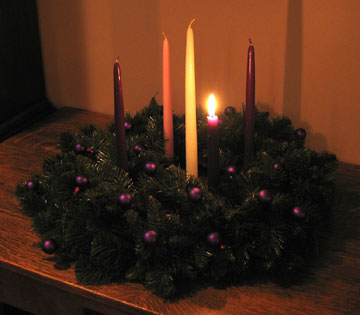 By lighting one candle each week of Advent, we help ourselves to get ready for the birth of Jesus. Last week we lit a candle that signified our waiting for God our Shepherd.
By lighting one candle each week of Advent, we help ourselves to get ready for the birth of Jesus. Last week we lit a candle that signified our waiting for God our Shepherd.
Today we focus on the coming of Christ who brings forgiveness from our sins.
Prayer for God’s Help
Dear God, thank you for this season of Advent that helps us to prepare for the coming of Christ at Christmas. As we read the Bible and light a candle, may excitement for Christ’s coming burn in our hearts. Amen.
Topics: Advent | 1 Comment »
Advent Calendar for December 8
By Mark D. Roberts | Saturday, December 8, 2007

Click here for the December 8 Advent Calendar entry!
Topics: Advent Calendar | No Comments »
An Unusual Holiday Mixture
By Mark D. Roberts | Saturday, December 8, 2007
Check out this scene from Marble Falls, Texas.
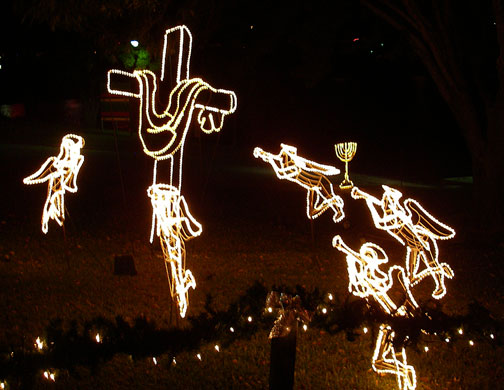
You’ve got Christmas angels trumpeting in the direction of a Good Friday cross. And in the background, a menorah, hat-tipping to Hannukah. No lack of religious symbolism in this public park. Check out the tunnel of lights through which one enters the park. Wow!

Topics: Texas, Only in Texas | No Comments »
Advent Calendar for December 7
By Mark D. Roberts | Friday, December 7, 2007

Click here for the December 7 Advent Calendar entry!
Topics: Advent Calendar | 1 Comment »
Introducing N.T. Wright at Laity Lodge
By Mark D. Roberts | Friday, December 7, 2007
Part 9 of series: Sharing Laity Lodge
Permalink for this post / Permalink for this series
A few days ago we were blessed to host a retreat for pastors and other leaders with N.T. Wright as speaker. Bishop Tom, as he is usually called in casual settings, spoke several times and participated in one long Q & A session. He and his wife, Maggie, are delightful people, the kind of people who are happy to hang out after lunch for a scintillating conversation around the table.
Many of my blog readers will be familiar with N.T. Wright, or Tom Wright as he is known through his popular writings. But some may not know of him, or may have only a vague notion of who he is. So I thought it might be helpful for me to reproduce in writing my oral introduction of Bishop Tom at Laity Lodge. I did not script and read that introduction, so you’re getting more or less what I actually said. At any rate, if you’re not familiar with Bishop Tom, this will help you get to know him. So, with no further ado, here’s my introduction . . . .
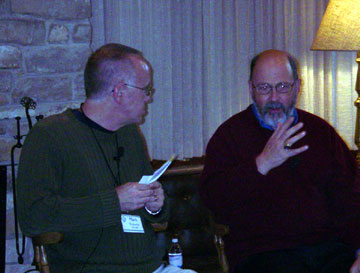 It is my privilege to introduce to you someone who needs no introduction. We’ve all come to this retreat because of our high regard for our speaker, who is well known through his prolific writings as well as his seasoned leadership of the church throughout the world. I’m here this weekend as the Senior Director of Laity Lodge, of course. But, in fact, I had registered for this retreat months before I came on staff here. The chance to hear Bishop Tom speak was well worth the trip from Southern California, where I lived until a couple of months ago. (Photo: from the Q & A at Laity Lodge.)
It is my privilege to introduce to you someone who needs no introduction. We’ve all come to this retreat because of our high regard for our speaker, who is well known through his prolific writings as well as his seasoned leadership of the church throughout the world. I’m here this weekend as the Senior Director of Laity Lodge, of course. But, in fact, I had registered for this retreat months before I came on staff here. The chance to hear Bishop Tom speak was well worth the trip from Southern California, where I lived until a couple of months ago. (Photo: from the Q & A at Laity Lodge.)
My appreciation for Bishop Tom began in 2000, when I took a three-month sabbatical from my pastoral work at Irvine Presbyterian Church. One of my goals for my sabbatical was to read four giant, classic books: Herman Melville’s Moby Dick, Victor Hugo’s Les Miserables, and N.T. Wright’s, The New Testament and the People of God (535 pp) and also Jesus and the Victory of God (741 pp). Bishop Tom’s books aren’t quite as long as those two great novels, but they do total more than 1200 pages.
Reading all four of those classics during my sabbatical was a wonderful experience. Two of the books were among the greatest novels I had ever read. And the other two, those by Bishop Tom, were among the greatest works of scholarship I had ever read. What made them so exceptional? In a nutshell, they explained Jesus and His ministry in an utterly compelling fashion by examining in detail the cultural, historical, and theological context for Jesus, and then interpreting the text of the Gospels in that context. Along the way, Bishop Tom incisively and graciously decimated the views of many of his academic opponents, especially much of the nonsense that had been popularized by the Jesus Seminar.
This is not to say that the picture of Jesus emerging from Bishop Tom’s writings is the individualistic “savior” so common in Western evangelicalism. Though he believes that Jesus saved us from our sins and opened up for us a bright future after death, Bishop Tom helps us to hear the true message of Jesus, the message of the reign of God come to earth, the message of a salvation that is far more extensive than what we often think, the message that calls a community of disciples to join Jesus in His work of “putting the world to rights.”
Throughout his prolific writings and by his personal example, Bishop Tom challenges us to get back to Scripture, to read more carefully those documents we include within the written Word of God. Sometimes his own study of these documents, always done with close attention to their original context, takes him in new and even discomforting directions. Yet he remains faithful to the text of Scripture, urging us to do the same even if such faithfulness invades our theological comfort zones.
We have with us for these next two days one of the most influential and respected biblical scholars in the world today. If Bishop Tom were simply an academic who holes up in libraries to produce masterpieces of scholarship, he’d have our deep respect and gratitude. But, amazingly enough, he is far more than this. He is Bishop Tom, as he likes to be called, because he is officially the Bishop of Durham, one of the most influential leadership positions in the Church of England. As a pastor he preaches, leads in worship, presides over the sacraments, counsels people, teaches classes, and serves on more church committees than any person should have to do prior to Purgatory. Moreover, he has been willing to take a leading role in helping the Anglican Communion deal with some of the trickiest and most divisive issues it has ever faced.
Bishop Tom is a prolific author, not only as N.T. Wright the scholar, but also as Tom Wright the plain-speaking pastor. By the way, there’s no truth to the rumor that he is able to write so many books because he has some poor soul named Tom Wright chained to a word processor in the dungeon of his castle. N.T. Wright is Tom Wright. The brilliant scholar who stirs up the academy is also the passionate pastor who instructs and inspires ordinary people, most notably through his marvelous series of commentaries for Everyone.
We are thrilled to host Bishop Tom at Laity Lodge, not only because of his excellent scholarship and leadership, but also because we share with him a deep passion for the ministry of the kingdom of God. Just last week several of us were talking with Howard Butt, Jr. about the core vision of Laity Lodge and its network of ministries. Howard, acknowledging the tendency for the word “laity” to be misunderstood, was searching for different language to express the vision Laity Lodge. Finally he said, “Our vision is this: the people of God for the world.” “The people of God for the world,” that’s what Laity Lodge is all about. And, as you may know, that’s what Bishop Tom is all about. In fact, he himself has used this very phrase many times to encapsulate our calling as Christians. The church, according to Bishop Tom, is to be “the people of God for the world.”
We are here as pastors and other Christian leaders to learn more about how we can lead the church in this central calling. That’s why Laity Lodge is here. And that’s why Bishop Tom is here. So, Bishop Tom, we welcome you to this place with gratitude and joy. Thank you for joining us at Laity Lodge for these two days. Please come and help us learn how to lead the church to be the people of God for the world.
Topics: Sharing Laity Lodge | 5 Comments »
Advent Calendar for December 6
By Mark D. Roberts | Thursday, December 6, 2007

Click here for the December 6 Advent Calendar entry!
Topics: Advent Calendar | No Comments »
The Barna Update: Four “Mega-Themes” Examined (Section 2)
By Mark D. Roberts | Thursday, December 6, 2007
Part 2 of series: The Barna Update: Trends, Challenges, and Opportunities
Permalink for this post / Permalink for this series
A couple of posts ago I began commenting on the latest Barna Update. As you may recall, it highlights four “mega-themes” in our culture. They are:
• Americans’ unconditional self-love
• Nouveau Christianity
• The five Ps of parenting
• Designer faith with rootless values.
Last time I shared some thoughts on the first two of these mega-themes. Today I’ll focus on the last two.
The Five P’s of Parenting
These “five P’s” come from George Barna’s recent book, Revolutionary Parenting (Barna, 2007). They are:
1. Preparation
2. Performing well
3. Pressure management
4. Protection
5. Public perception
Most parents do not see themselves as the key to grooming a well-rounded child; they believe their role is to place their child in developmental environments and under the tutelage of those who can take their prodigies to the next level of proficiency.
Many parents, even those who are born again Christians, also overlook the need to foster deeper a connection between their children and God, or to enhance the child’s worldview as a critical component of their decision-making skills.
These observations fit with what I have seen during my tenure as a pastor, though with plenty of exception. Many parents underestimate their role and responsibility as the primary encouragers of their children’s intellectual and spiritual growth. They expect schools to grow their children’s minds and churches to develop their children’s spiritual lives. Of course schools and churches play a central role in this process. But parents are essential.
Why do parents minimize their role as educators and disciplers of their children? Partly, they have bought into a professionalism model, in which only trained professionals do the heavy lifting with children. Partly, parents feel insecure about their own abilities. And partly, Christian parents are sometimes ignorant of their God-given responsibility to nurture the faith of their own children. All of this opens up a huge opportunity for the church to teach and encourage parents to be the parents God has called them to be.
Designer Faith with Rootless Values
Here’s an excerpt from the Barna website:
As young adults, teenagers and adolescents have become accustomed to radical individualism, they have introduced such thinking and behavior into the faith realm, as well. Faith is an acceptable attribute and pursuit among most young people. However, their notions of faith do not align with conventional religious perspectives or behavior. For instance, young people are still likely to claim the label “Christian,” but the definition of that term has been broadened beyond traditional parameters.
In my experience, it’s not just “young adults, teenagers and adolescents” who exemplify “designer faith with rootless values.” My own generation of boomers has done this same thing.
In fact, I have found that the younger generations tend to look for a kind of rootedness, one that takes Christian tradition seriously. Our “post-contemporary” worship at Irvine Presbyterian Church, called Veritas, featured an excellent rock-band that regularly used hymns. Our worship leader, Dale Huntington, who was in his early 20s, was eager to connect what we were doing in Veritas with some of the classic Christian traditions. He, and others like him, wanted a faith with roots.
Nevertheless, I agree with the Barna Update about the tendency for many Christians to pick and choose what they want to believe and obey. Thus the church faces the stiff challenge, not only of teaching biblical truth, but of convincing people that they should accept even the aspects of that truth they find unpalatable. My sense is that, for most people, this kind of convincing will come more from how we live than from how we preach.
Topics: George Barna Update | 1 Comment »
Advent Calendar for December 5
By Mark D. Roberts | Wednesday, December 5, 2007

Click here for the December 5 Advent Calendar entry!
Topics: Advent Calendar | No Comments »
Christmas Lights in Johnson City, Texas
By Mark D. Roberts | Wednesday, December 5, 2007
Johnson City in the Hill Country of Texas outside of Austin is famous, not only as the birthplace of President Lyndon B. Johnson, but also for its extraordinary “Lights Spectacular” during December. Here’s one scene from the downtown area of this small city:

Topics: Only in Texas | 2 Comments »
Advent Calendar for December 4
By Mark D. Roberts | Tuesday, December 4, 2007

Click here for the December 4 Advent Calendar entry!
Topics: Advent Calendar | No Comments »





